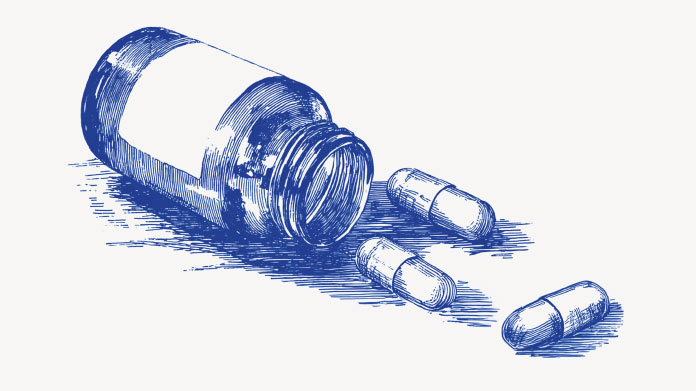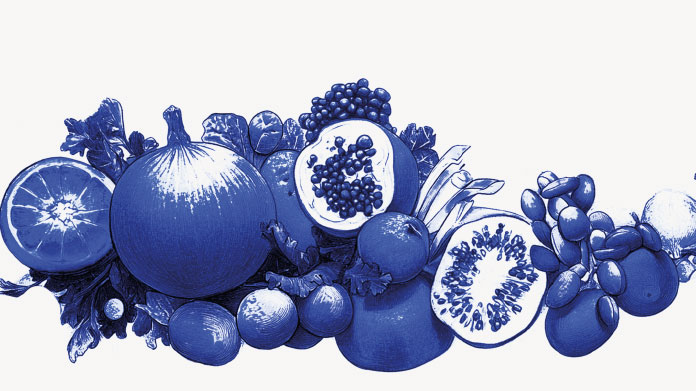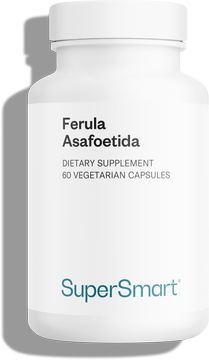Organic silicon: what benefits does it offer? Which form should you choose?
If you’re wondering what benefits organic silicon offers, and which form is the best, read on for our summary of this valuable trace-element.

What is organic silicon?
With the chemical symbol Si, silicon has the atomic number 14 in the periodic table. Representing around 26% of the Earth’s crust, it is the planet’s second most abundant element after oxygen (1). It does not, however, exist in a free state in nature but in a compound form, combined with other atoms.
The adult human body contains around 7g of silicon. Concentrated in various tissues (the skin, arteries, thymus …), it is also a trace element that’s important for health. As silicon cannot be produced by the body, it is essentially obtained from the diet, from sources such as mineral water, whole grains, pulses, lettuce, and almonds … (2)
Two main forms of silicon are present in our environment (3):
- the mineral silicon: found in sand as well as in certain rocks (quartz, opal, amethyst …), it is not water-soluble and is thus very poorly-absorbed by the body;
- organic silicon: in its natural state, it’s the result of the metabolism of the mineral silicon by the root system of plants. Woody plants, such as bamboo, horsetail, oats and nettles, contain significant amounts. It can also be chemically synthesised in the laboratory, in which case it is water-soluble and offers much better bioavailability.
What benefits does organic silicon offer?
More radiant skin
Organic silicon preserves the skin’s youthfulness and radiance by reducing wrinkles and maintaining hydration. It also plays a role in ensuring beautiful nails and hair (4). As our silicon reserves unfortunately diminish over time, it constitutes an invaluable aid to mature skin.
By way of example, one study of 50 women with sun-damaged skin showed a clear improvement in skin texture following supplementation with a particular form of organic silicon called orthosilicic acid (5).
Ensures bone mineralisation
A key component of bone and connective tissue, organic silicon supports calcium binding. It is found in the osteoid border, where bone is built (6).
Several studies have also examined the effects of increased intake of dietary silicon on bone mineral density in perimenopausal women (7). A number of tests on laboratory animals are also investigating the effects of a lack of silicon on skeleton formation (8).
A defensive boost
A key immune system organ, the thymus contains a significant level of silicon. Located in the upper chest area between the lungs, the thymus gland is involved, in particular, in the maturation of T-lymphocytes (9-10).
Good for the arteries
Did you know that one of the highest concentrations of organic silicon is found in the aorta? As the body’s main artery, this complex structure distributes oxygenated blood from the heart to the organs.
Closely linked to the production of elastin, silicon is believed to modulate the elasticity of blood vessels (11). And as we know, rigidity of artery walls is a key risk factor for cardiovascular disease.
Anti-metal shield
A number of studies have looked at the interactions between aluminium and silicon, and the potential ‘buffer’ effect of the latter on the former (12).
Part of the family of heavy metals, aluminium has a tendency to accumulate in tissues such as the bones, liver, lungs and brain. Known to be toxic at high doses, it may play a role in the development of certain neurological disorders, particularly in people with kidney failure (13).
Which is the best form of organic silicon?
Keen to start supplementing with organic silicon but unsure as to which form to choose?
Three forms are generally used in the production of dietary supplements : solid silicon (silicon dioxide), silicic acid gel and liquid silicon (stabilised orthosilicic acid). However, they do not all offer the same degree of bioavailability.
Stabilised orthosilicic acid is to date the most beneficial form for health because of its high qualitycholine, which itself already serves as a nutrient for cells, but which acts here as a stabiliser, preventing the polymerisation of the orthosilicic acid (in other words, its conversion into substances with a higher molecular mass) (15).
Without choline, the unstable orthosilicic acid would be partly converted into silica gel. This stabilisation thus ensures better absorption in the gut for maximum efficacy.
Looking for a comprehensive organic silicon supplement?
Stabilised by the addition of choline, the liquid silicon supplement Orthosilicic Acid benefits from a synergy of vitamins and minerals which boosts its effects in the body. It contains, in particular, vitamin B12, boron, manganese, zinc (which supports healthy skin and nails) and selenium (which helps to maintain healthy hair and nails) (16-17).
It is also notable for its content of L-carnitine (present in mitochondria, the cells’ powerhouses), and MSM (a precursor of key joint compounds) (18-19).
References
- Jurkić LM, Cepanec I, Pavelić SK, Pavelić K. Biological and therapeutic effects of ortho-silicic acid and some ortho-silicic acid-releasing compounds: New perspectives for therapy. Nutr Metab (Lond). 2013 Jan 8;10(1):2. doi: 10.1186/1743-7075-10-2. PMID: 23298332; PMCID: PMC3546016.
- Farooq MA, Dietz KJ. Silicon as Versatile Player in Plant and Human Biology: Overlooked and Poorly Understood. Front Plant Sci. 2015 Nov 12;6:994. doi: 10.3389/fpls.2015.00994. PMID: 26617630; PMCID: PMC4641902.
- Pennington JA. Silicon in foods and diets. Food Addit Contam. 1991 Jan-Feb;8(1):97-118. doi: 10.1080/02652039109373959. PMID: 2015936.
- Araújo LA, Addor F, Campos PM. Use of silicon for skin and hair care: an approach of chemical forms available and efficacy. An Bras Dermatol. 2016 May-Jun;91(3):331-5. doi: 10.1590/abd1806-4841.20163986. PMID: 27438201; PMCID: PMC4938278.
- Barel A, Calomme M, Timchenko A, De Paepe K, Demeester N, Rogiers V, Clarys P, Vanden Berghe D. Effect of oral intake of ch.-stabilized orthosilicic acid on skin, nails and hair in women with photodamaged skin. Arch Dermatol Res. 2005 Oct;297(4):147-53. doi: 10.1007/s00403-005-0584-6. Epub 2005 Oct 26. Erratum in: Arch Dermatol Res. 2006 Apr;297(10):481. Dosage error in article text. Erratum in: Arch Dermatol Res. 2006 Feb;297(8):381. Paepe, K De [corrected to De Paepe, K]. PMID: 16205932.
- Carlisle EM. Silicon: an essential element for the chick. 1972 Nov 10;178(4061):619-21. doi: 10.1126/science.178.4061.619. PMID: 5086395
- Macdonald HM, Hardcastle AE, Jugdaohsingh R, Reid DM, Powell JJ. Dietary silicon intake is associated with bone mineral density in premenopasual women and postmenopausal women taking HRT. Journal of Bone Mineral Research. 2005;20:S393.
- Jugdaohsingh R, Tucker KL, Qiao N, Cupples LA, Kiel DP, Powell JJ. Dietary silicon intake is positively associated with bone mineral density in men and premenopausal women of the Framingham Offspring cohort. J Bone Miner Res. 2004 Feb;19(2):297-307. doi: 10.1359/JBMR.0301225. Epub 2003 Dec 16. PMID: 14969400.
- Gordova VS, Dyachkova IM, Sergeeva VE, Sapozhnikov SP, Smorodchenko AT. Morphofunctional adaptation of rat thymus structures to silicon consumption with drinking water. Bull Exp Biol Med. 2015 Apr;158(6):816-9. doi: 10.1007/s10517-015-2869-x. Epub 2015 Apr 21. PMID: 25894784.
- Thapa P, Farber DL. The Role of the Thymus in the Immune Response. Thorac Surg Clin. 2019 May;29(2):123-131. doi: 10.1016/j.thorsurg.2018.12.001. Epub 2019 Mar 7. PMID: 30927993; PMCID: PMC6446584.
- Maehira F, Motomura K, Ishimine N, Miyagi I, Eguchi Y, Teruya S. Soluble silica and coral sand suppress high blood pressure and improve the related aortic gene expressions in spontaneously hypertensive rats. Nutr Res. 2011 Feb;31(2):147-56. doi: 10.1016/j.nutres.2010.12.002. PMID: 21419319.
- Bellia JP, Birchall JD, Roberts NB. The role of silicic acid in the renal excretion of aluminium. Ann Clin Lab Sci. 1996 May-Jun;26(3):227-33. PMID: 8726215.
- Klotz K, Weistenhöfer W, Neff F, Hartwig A, van Thriel C, Drexler H. The Health Effects of Aluminum Exposure. Dtsch Arztebl Int. 2017 Sep 29;114(39):653-659. doi: 10.3238/arztebl.2017.0653. PMID: 29034866; PMCID: PMC5651828.
- Araújo LA, Addor F, Campos PM. Use of silicon for skin and hair care: an approach of chemical forms available and efficacy. An Bras Dermatol. 2016;91(3):331-335. doi:10.1590/abd1806-4841.20163986
- Wickett RR, Kossmann E, Barel A, Demeester N, Clarys P, Vanden Berghe D, Calomme M. Effect of oral intake of chol.-stabilized orthosilicic acid on hair tensile strength and morphology in women with fine hair. Arch Dermatol Res. 2007 Dec;299(10):499-505. doi: 10.1007/s00403-007-0796-z. Epub 2007 Oct 25. PMID: 17960402.
- Gupta M, Mahajan VK, Mehta KS, Chauhan PS. Zinc therapy in dermatology: a review. Dermatol Res Pract. 2014;2014:709152. doi:10.1155/2014/709152
- Tortelly Costa VD, Melo DF, Matsunaga AM. The Relevance of Selenium to Alopecias. Int J Trichology. 2018;10(2):92-93. doi:10.4103/ijt.ijt_37_17
- Virmani MA, Cirulli M. The Role of l-Carnitine in Mitochondria, Prevention of Metabolic Inflexibility and Disease Initiation. Int J Mol Sci. 2022 Feb 28;23(5):2717. doi: 10.3390/ijms23052717. PMID: 35269860; PMCID: PMC8910660.
- Butawan M, Benjamin RL, Bloomer RJ. Methylsulfonylmethane: Applications and Safety of a Novel Dietary Supplement. 2017 Mar 16;9(3):290. doi: 10.3390/nu9030290. PMID: 28300758; PMCID: PMC5372953.
Keywords
5 Days
Delivery is prompt and I never saw a…
Delivery is prompt and I never saw a quality problem with the manufacturing. It is not possible to assess efficacy on a personal basis, since too many factors come into play. Efficacy can only be assessed statistically with a sufficient number of cases.
Roger De Backer
6 Days
I collaborates with the Supersmart…
I collaborates with the Supersmart more than 10 years. Every thing is going good. Quality of the things is good. Delivery comes in time. Five stars definitely !!!
Oleksiy
7 Days
All good
Simple, frictionless site, easy ordering, good delivery updates and execution.
Chris Robbins
9 Days
I feel better
I feel better
Peter Ammann
9 Days
Prompt delivery
Prompt delivery
JAKUB Radisch
10 Days
My new go-to for top quality supplements!
I am buying more and more of my supplements from this superb, high quality company. Cannot recommend it enough. Plus, excellent customer service with a quick, helpful team and speedy deliveries. Highly recommend Supersmart!
Cecilie H.
14 Days
SUPERSMART WHAT ELSE👍
SUPERSMART WHAT ELSE👍
DIEDERLE Christophe
17 Days
Excellent quality products with…
Excellent quality products with innovative formulas, as someone who has been suffering with acid reflux, these supplements have been lifesavers.
Oriana Moniz
17 Days
high quality supplement!
high quality supplement!
GALANT
17 Days
Good service prompt delivery
Good service prompt delivery
Mrs Marcella Reeves
22 Days
I like your clear explanation
I like your clear explanation. And how to make a choice of products for a specific health problem
Ingrid
29 Days
Great product and it arrives quickly.
Great product and it arrives quickly.
SOMMARIVA Gianni
30 Days
Excellent products and fast service.
Excellent products and fast service. What do we need more?
Margarida
34 Days
The variety of products is amazing
The variety of products is amazing, the offers are good and the sending is very fast. I just miss having a bit more of guidance about combinations, possible interactions, etc.
Maria Angeles Verdu
35 Days
It was quick
It was quick.
Timo Antero





